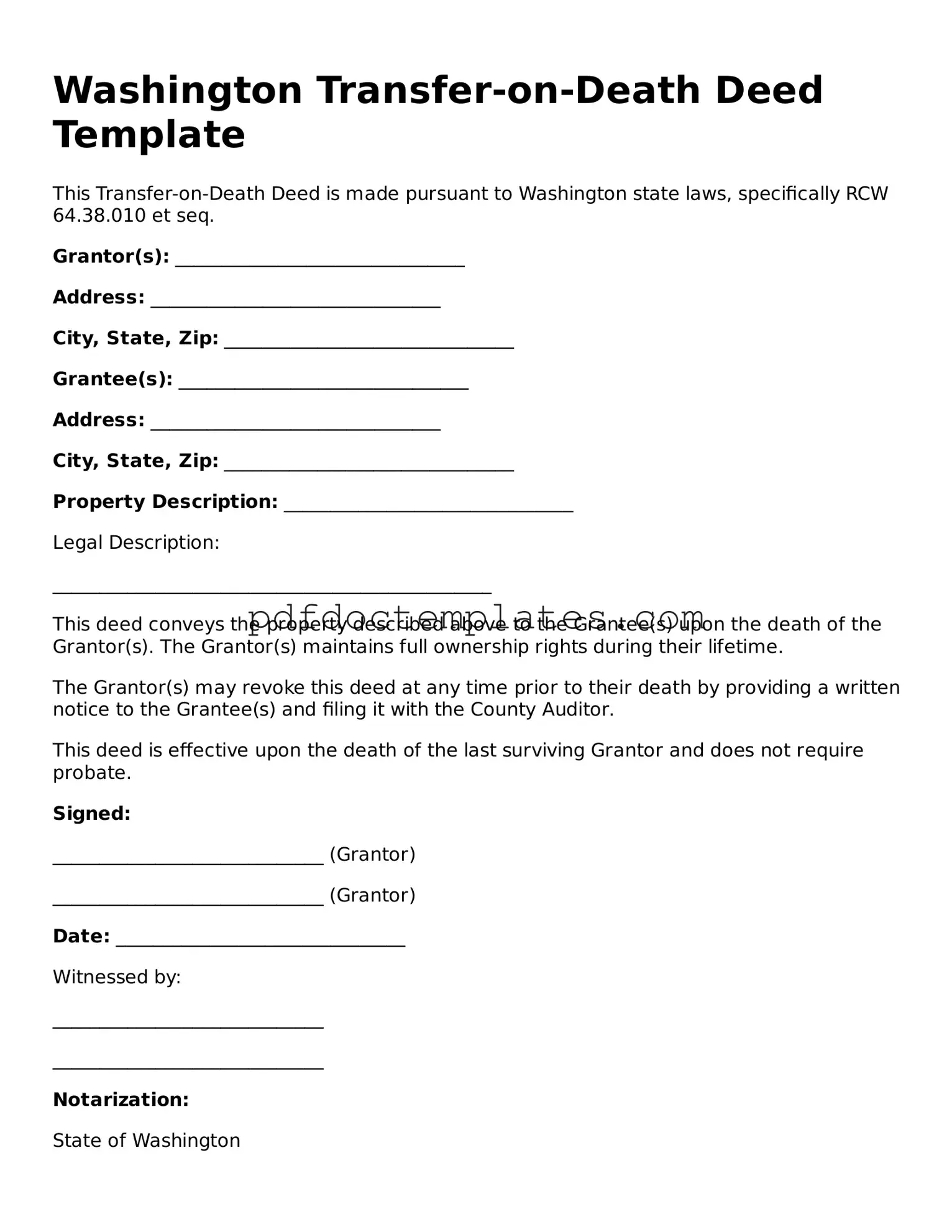Washington Transfer-on-Death Deed Template
This Transfer-on-Death Deed is made pursuant to Washington state laws, specifically RCW 64.38.010 et seq.
Grantor(s): _______________________________
Address: _______________________________
City, State, Zip: _______________________________
Grantee(s): _______________________________
Address: _______________________________
City, State, Zip: _______________________________
Property Description: _______________________________
Legal Description:
_______________________________________________
This deed conveys the property described above to the Grantee(s) upon the death of the Grantor(s). The Grantor(s) maintains full ownership rights during their lifetime.
The Grantor(s) may revoke this deed at any time prior to their death by providing a written notice to the Grantee(s) and filing it with the County Auditor.
This deed is effective upon the death of the last surviving Grantor and does not require probate.
Signed:
_____________________________ (Grantor)
_____________________________ (Grantor)
Date: _______________________________
Witnessed by:
_____________________________
_____________________________
Notarization:
State of Washington
County of _________________
On this ____ day of ______________, 20___, before me, a Notary Public, personally appeared _______________________________ and _______________________________, personally known to me (or proved to me on the basis of satisfactory evidence) to be the individuals that executed this instrument and acknowledged it to be their free and voluntary act for the uses and purposes therein mentioned.
_____________________________
Notary Public in and for the State of Washington
My Commission Expires: ________________
